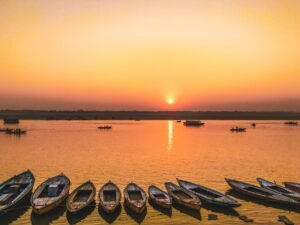Written By: Khushi Gupta
Introduction
The country of India hosts a huge population that further creates a huge demand for basic life necessities like water. However, this demand goes with major disappointment for people due to the severe scarcity of water. According to the 2017 UNICEF report, India’s two-thirds districts among the 718 districts, were reported to be under-supplied with water, with groundwater becoming scarcer every day.
Apart from the scarcity of water, a bigger problem is the quality of the water available. The same report said that at least fifty percent of water consumed is contaminated with chemicals like fluoride and arsenic.
Right to water was added to the extended interpretation of the Right to life under article 21 of the Indian constitution in the judgment of the case of Peoples Union for Civil Liberties (PUCL) v. Union of India & Ors. W.P. (Civil) No. 196 / 2001. This judgment created a precedent that seeped down to the lowest levels of court.
What is meant by the right to water?
In India, the right to water does not exist independently in one constitutional article or as separate legislation, but the right to get water is included not just under just one of the rights but in three different rights namely under the right to food, right to environment, and even right to health, these right however do not exist independently, they are a part of a fundamental right to life under article 21 of which meaning has been extended in several folds through different judgments by the Apex court.
In addition to this, the right to water also features in the Directive Principles of State Policy(DPSP) under Article 39 (b) that states ‘the State shall, in particular, direct its policy towards securing that the ownership and control of the material resources of the community are so distributed as best to subserve the common good.’
The closest legislation that does come close to identifying and fixing the problem of pollution in water is the 1977 Act of The Water (Prevention and Control of Pollution) Cess.
International picture of water as a ‘right’
The United Nations Water Conference in 1977 was the first formal international step taken towards the formulation of water as a right. Before that, it was an unsaid part of the right to basic amenities reflected in different treaties, conventions, and agreements. In the terms of water as a right, the court of South Africa has laid down some of the major decisions, it has tried to explain the meaning of the right to water and interpreted it in a more diverse way. The first interpretation that it mentions is that the right to water must include the right to be physically in reach to water sources. The second extends the physical reach to monetary too. The state should provide economic access to people who are in the physical range of water sources. The third part of the meaning of this right is that access to water should be ever-present, no exceptions should be allowed against any sort of undue infringement.
One of the important cases was Manqele v Durban Transitional Metropolitan Council Durban High Court, 2002 (6) SA 423 (D) of South Africa, which declared that cutting someone’s supply of water is an infringement of their right and is ultra vires to the constitution.
The recent developments
The right to water in India is protected by the laws as a negative right, which means it is our right to complain against the pollution of water sources, but there is no direct access to the right to clean water sources. Bandhua Mukti Morcha v. Union of IndiaAIR 1984 SC 802 has been fundamental to ensure that the right to clean water makes up for the right to a healthy environment.
Narmada Bachao Andolan v. Union of India (2000) 10 SCC 664 is a case where the supreme court has from time to time ruled the importance of water and has included it in right to life. Through such cases, the supreme court has also identified the ‘polluter pays’ and ‘precautionary’ principles. These principles help in giving out some sort of compensation to the people who have been affected by the pollutive ways of others. There has also been an attempt to create deterrence by adding a legal dimension to the access of water an apt example of this was seen in the case of Vellore Citizens’ Welfare Forum v. Union of India(1996) 5 SCC 647.
Challenges in right to water
Some more challenges that exist and continue to hinder the implementation of the right to water is the first and foremost, dealing with the dual problem of availability of water and poverty in some sections of society, this is crucial as even the access to water infrastructures get cut because of being economically handicapped. The second challenge is that of the cost that is borne by the government to ensure the availability of water free of cost. In relation to the first challenge, many states had started the system to get free water to the poor people, but this created another problem that became a hindrance for the implementation of this right.
Conclusion
When it comes to social rights such as the right to water, the right becomes a very vulnerable territory since they do not exist in one sphere of law but in fact, they find themselves to be stretched upon various political issues and public policies. The right cannot exist independently due to its co-dependency on resources, water distribution and quality will foremost come down to the fact whether we have that ample amount of water or not. The first thing that has to be taken into account is how many resources are there and then how they can be allocated uniformly. Geography, population, and diversity will always affect the enforcement of this right.
Previous Posts
The International Criminal Court as a Court – An Evaluation
Victims of crime: Restoration and Legal care under Indian Criminal Jurisprudence
Invasion of privacy right by visual media and need for its regulation




